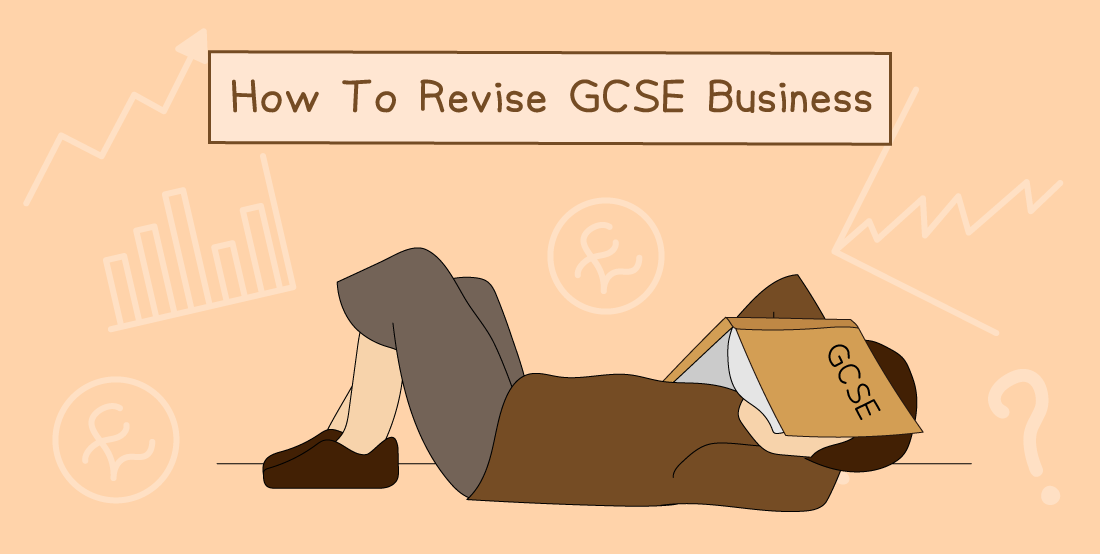Contents
- 1. Tactic 1: Visual Revision Techniques
- 2. Tactic 2: Using Past Exam Papers
- 3. Tactic 3: The Pomodoro Technique
- 4. Tactic 4: Teaching Others
- 5. Tactic 5: Creating a Study Schedule
- 6. Tactic 6: Using Flashcards for Key Terms
- 7. Tactic 7: Using Real-World Examples
- 8. Tactic 8: Know your exam board
- 9. Improve Your Grades with Save My Exams
Struggling to revise for GCSE Business? You’re not alone. Many students find it tough to remember key terms, business models, and financial concepts. It’s frustrating when you spend hours revising but still struggle to recall information in an exam.
The problem? Many students rely on passive revision—reading notes, highlighting textbooks—only to realise it doesn’t stick. This can knock your confidence and make revision feel overwhelming.
But don’t worry—there’s a smarter way to revise. Techniques like mind maps, past papers, and the Pomodoro method can transform the way you learn. Using diagrams helps you visualise tricky concepts, while past papers prepare you for real exam questions. Breaking revision into focused 25-minute chunks keep your brain engaged without burnout. Teaching a topic to someone else? That’s one of the best ways to check you truly understand it.
I’ve spent over 20 years helping GCSE students master Business Studies—both as a teacher and an examiner. I know what works, and I’ll show you how to revise effectively so you can walk into that exam feeling confident and prepared.
In this article I am going to cover eight tried-and-tested tactics that have led to success for my students. These techniques are:
Visual revision techniques
Using past paper exams
The Pomodoro Technique
Teaching others
Creating a study schedule
Using flashcards for key terms
Using real world examples
Know your exam board
Tactic 1: Visual Revision Techniques
How can visual revision techniques help with GCSE Business?
Business Studies contains a lot of key terms, processes, and models that need to be remembered for the exam. Visual learning techniques can be a great way to break down complex information into manageable chunks.
Mind maps are particularly useful for topics like the marketing mix or types of business ownership, where you need to see how different elements connect. Many of my students who struggled with remembering lists of information found that organising them in a colourful, visual way helped them recall details much faster.
Flowcharts work well for understanding business processes, such as recruitment or product development. One of my students created a flowchart for the recruitment process and could easily remember each stage because she saw it as a ‘story’ rather than a list.
Diagrams and charts can make financial calculations more approachable. For instance, a break-even chart is much easier to understand when drawn out rather than just reading about it.
Save My Exams has some excellent resources that include diagrams and structured notes to help you with this. Learn more in our guide to effective visual revision techniques.
Tactic 2: Using Past Exam Papers
How can past exam papers improve your revision?
One of the most effective ways to prepare for GCSE Business is by using past papers. They help familiarise you with the exam format, the style of questions, and the level of detail required in your answers.
I always encourage students to complete past papers under timed conditions. This not only improves their speed but also highlights which areas need more revision.
When reviewing your answers, don’t just check the mark scheme, write down what you could have added to improve your response. Many students find that keeping a ‘mistakes log’ helps them avoid repeating errors in future.
Look for patterns in the types of questions asked. For example, longer evaluation questions often focus on business growth or financial management, so practising these topics in detail will prepare you well.
One student I taught struggled with structuring 9-mark questions. After completing past papers weekly and reviewing feedback, they became much more confident in building arguments and applying case studies effectively.
Save My Exams provides worked examples and examiner feedback, which can help you understand exactly what earns marks in an exam. You can practice using our extensive collection of topic-specific questions for AQA and topic questions for Edexcel.
Tactic 3: The Pomodoro Technique
What is the Pomodoro Technique and how can it help?
Studying for long periods without a break can be exhausting. The Pomodoro Technique is a time management method that involves working in 25-minute intervals, called Pomodoros, with short breaks in between. The technique helps you focus and be more productive.
Set a timer for 25 minutes and focus on one topic (e.g., the advantages and disadvantages of franchising). After the timer goes off, take a 5-minute break before starting another session.
Breaking revision into shorter, focused bursts helps maintain concentration. Students who find it hard to stay focused often benefit from this approach because it reduces procrastination and makes studying feel more manageable.
After four Pomodoro sessions, take a longer 15–30 minute break to refresh your mind. This method has been particularly useful for students who struggle to stay engaged for long periods.
One of my students, who had difficulty staying focused, found that this method made studying feel more manageable and prevented burnout. By sticking to the technique, they were able to complete revision without feeling overwhelmed. Have a look at our guide to the Pomodoro technique for more information.
Tactic 4: Teaching Others
Why is teaching others an effective revision strategy?
One of the best ways to check if you truly understand a topic is to teach it to someone else. If you can explain it clearly, you know it well. If you get stuck, you know where to focus your revision.
Try explaining business concepts to a friend or family member. For example, describe how supply and demand works or the benefits of just-in-time stock control.
Some of my students have recorded themselves explaining topics and then listened back to check for gaps in their understanding. Others have ‘taught’ their pets or even stuffed animals - whatever works for you!
A student of mine who struggled with business finance improved dramatically by explaining profit and loss statements to her younger brother. By breaking it down simply, she reinforced her own understanding and performed much better in her mock exam.
Tactic 5: Creating a Study Schedule
How can a study schedule keep you on track?
A structured study plan will help you stay on track and cover everything before the exam.
Break down your revision into specific topics. For example, one week could focus on marketing, while the next covers finance and operations.
Rotate between different types of revision (e.g., reading notes, attempting past paper questions, creating flashcards) to keep things engaging.
Students who stick to a plan tend to feel more in control and less overwhelmed as the exam approaches. I always tell my students that starting early and spreading revision out is far more effective than last-minute cramming. Have a look at our guide to creating a GCSE revision timetable for more tips.
One of my students who followed a structured plan found that, by the time exams arrived, they felt much more confident because they had already covered everything in manageable chunks rather than rushing at the last minute.
Tactic 6: Using Flashcards for Key Terms
How can flashcards help with Business Studies revision?
Flashcards are a great way to test yourself on key business terms and definitions, such as ‘liquidity,’ ‘economies of scale,’ or ‘fixed costs.’
Writing your own flashcards can also help reinforce learning. One student of mine found that making flashcards in her own words made it much easier to remember business concepts in the exam.
To make this method more effective, test yourself regularly and remove cards that you consistently get right.
Tactic 7: Using Real-World Examples
Why are real-world examples useful in Business Studies revision?
Business exams often require you to apply knowledge to real-life situations. Keeping up with business news and case studies will help you develop strong application skills.
I recommend following major business stories and linking them to topics in your syllabus. For example, a student once used Apple’s pricing strategies as an example in their exam, which helped strengthen their answer.
Save My Exams provides case study-based questions to help students practice applying theory to real-world business scenarios.
Tactic 8: Know your exam board
Whether your exam board is Edexcel, AQA or OCR, knowing which exam you will be taking is incredibly important. Before you start to revise, read your exam board’s specification.
A specification is an important document that lists all of the content in your Business Studies course, breaking it down into key topics. From here, you can decide which content you should start to revise first.
Improve Your Grades with Save My Exams
Save My Exams offers a range of resources to help you excel in GCSE Business, including revision notes, flashcards, past papers, and exam-style questions that are marked for you. These materials are aligned with the specific exam boards, providing targeted support for different topics like marketing, finance, and operations.
Revision notes break down complex concepts into manageable sections, while past papers allow you to practice under timed conditions. Additional exam-style questions can familiarise you with the types of questions you might face.
Explore Our GCSE Business Studies Revision Resources
References
https://journals.sagepub.com/stoken/rbtfl/Z10jaVH/60XQM/full
Sign up for articles sent directly to your inbox
Receive news, articles and guides directly from our team of experts.

Share this article



 written revision resources that improve your
written revision resources that improve your